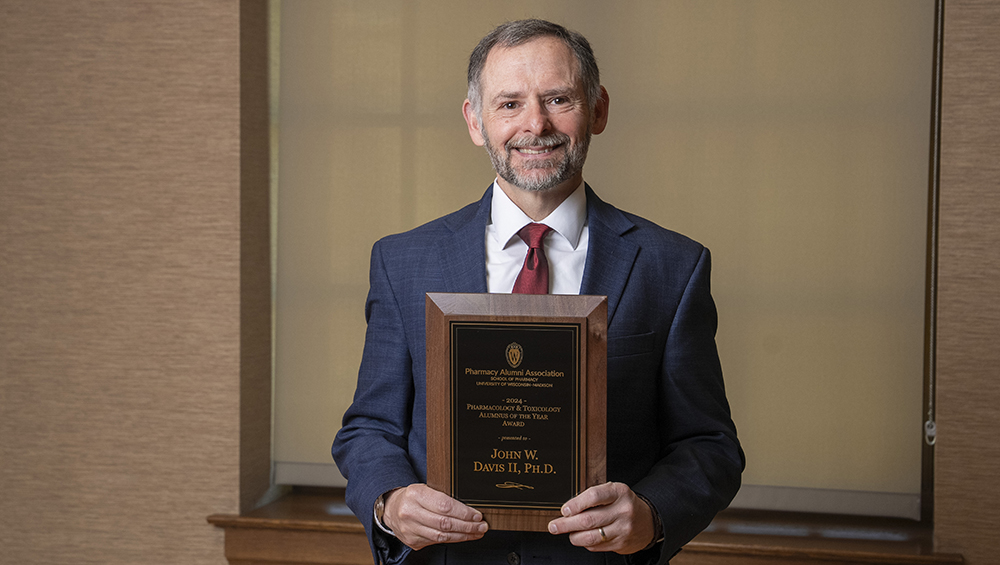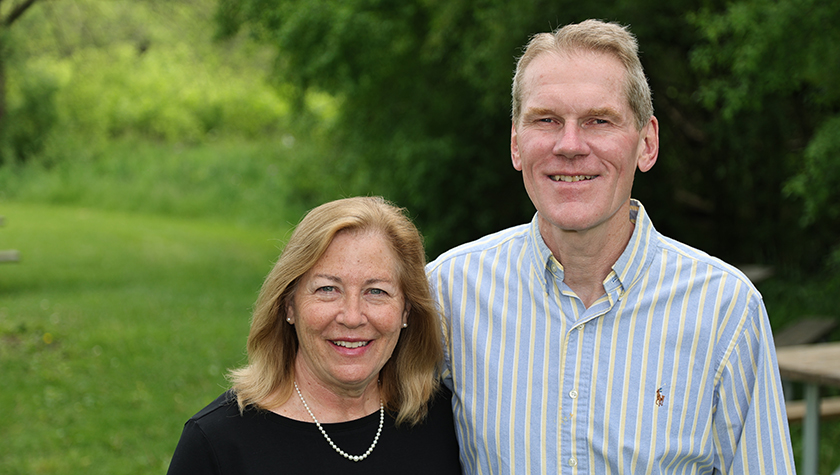
All four members of the Steffen family took a different career path, all branching from a start at the UW–Madison School of Pharmacy
By Katie Ginder-Vogel
Jim (BS ’83) and Cindy (BS ’84) Steffen met when they were both students at the University of Wisconsin–Madison School of Pharmacy, at a party Jim and his roommates hosted. It was a “generic party” — a party theme that may only be recognizable to those in college in the 1980s. Generic versions of medications, food items, and other products had recently been introduced, packaged in black and white boxes. The party was a tongue-in-cheek nod to the generics trend, with everything in black and white.
Jim was in his third year of pharmacy school when they met, and Cindy was in her second.
“That year at homecoming, I remember telling my mother that I think I met the person I would like to marry,” recalls Cindy. “It was about two years later that we got engaged, and a year after that we got married.”
Jim and Cindy Steffen and their two children — Brad Steffen (BS ’12) and Dana Steffen Ramms (BS ’15) — all graduated from the School of Pharmacy, but each has taken a different career path that has been anything but generic.
Bringing pharmacy experience to informatics
Jim’s older sister, Lynn Radmer (BS ‘80), was in pharmacy school at UW–Madison when he started his undergraduate studies at UW–Milwaukee. She began her career as a hospital pharmacist, then went into managed care, and is now a pharmacy practice consultant with the Division of Medicaid Services for the State of Wisconsin.
“That’s what got me into pharmacy,” Jim says. “It seemed interesting — it mixed science, drugs, and serving people, and I knew it would challenge me. All my friends were going into the business world, and I wanted more of a science-based career.”

At first, he was planning on going into industry after graduation, but he followed his sister’s footsteps into hospital pharmacy. After a one-year internship at Waukesha Memorial Hospital, Jim landed a job at St. Anthony Hospital in Milwaukee.
“I started off in a very small hospital setting, then went to West Allis Memorial Hospital, and then to Froedtert,” Jim says. “I was one of Froedtert’s first preceptors to take pharmacy residents from UW–Madison.”
His time at Froedtert covered a lot of ground, including working in the central pharmacy, the operating room, and the Diabetes Assessments and Resource Team. He became heavily involved in the information technology side of the hospital’s operations, working on the implementation and ongoing maintenance of the Abacus software for total parenteral nutrition compounding and became an Epic super-user for the 2004 initial rollout.
In 2006, he began a new 50/50 role in pharmacist staffing and Epic support. From 2012 until his 2023 retirement, he supported Epic full-time as an informatics pharmacist, helping to implement the software throughout the Froedtert Hospital network, including modules for surgery and anesthesia in the operating rooms. He also created scoring system tools in Epic for tracking patient medication reconciliation completion and clinical monitoring for medications and infectious disease.
“Having different clinical experiences and then working in informatics helped me make a bigger impact,” he says. “I had the background to know what pharmacists needed to make their lives easier.”
Training and advocating for pharmacy technicians
Like Jim, Cindy also has a pharmacist sister, Janis Ruffolo (BS ’87). At a career fair in high school, she found her own interest in pharmacy and never looked back. Her father, a proud UW–Madison alum, encouraged her to apply to the School of Pharmacy, where she quickly became involved with several student organizations.
“I was very tight with my fellow students,” says Cindy, who was the School’s Alumna of the Year in 2010. “We’re still friends with most of those people and get together on a regular basis.”
When Cindy was planning her wedding and preparing to move to Milwaukee after her internship, her preceptor’s daughter invited her to interview for a newly created job at Columbia Hospital.
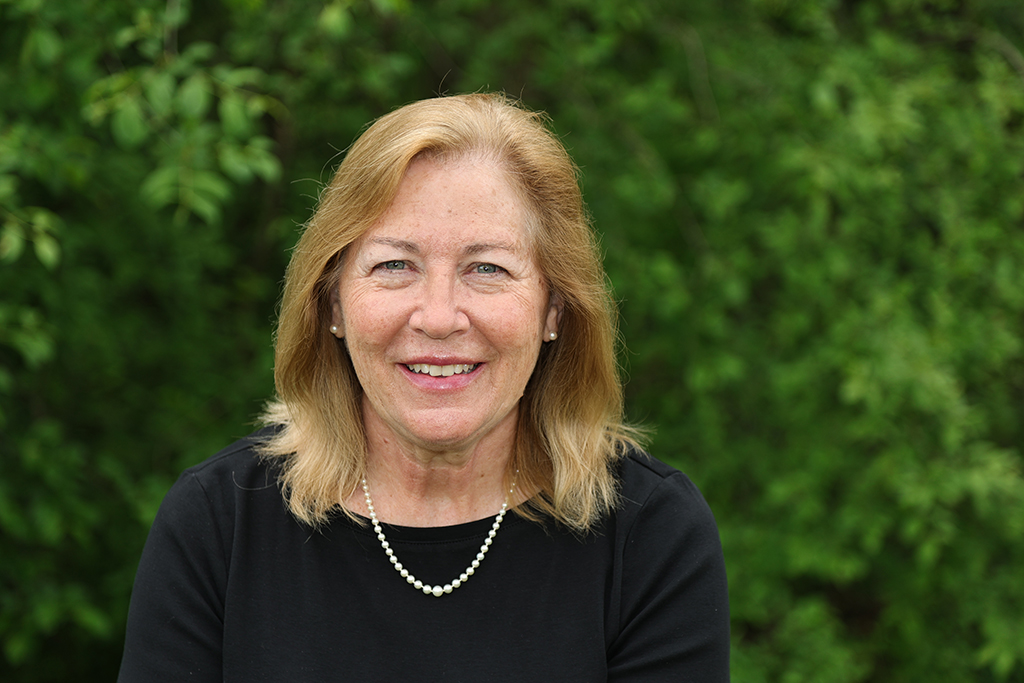
“I interviewed the week before our wedding, moved to Milwaukee, did my orientation the week after our wedding, then went on my honeymoon the week after that,” she says. “I worked in hospital and community pharmacy and moved on from there. Most of the positions I had, I never applied for. I networked, and people would ask, ‘Do you want to do this?’ and I’d say, ‘Sure, I can try that.’”
At one point, when Cindy was working as a consulting pharmacist, she met the founder of the pharmacy technician program at Milwaukee Area Technical College (MATC). He encouraged her to join the teaching faculty, which she did from 1989 to 2021.
“When he retired, he said he wanted me to take his job,” she says, which she did, from 1998 until 2021. “I feel like I really built the program up and impacted lots of pharmacy technicians.”
As the program chair, she oversaw the curriculum and advised 100 students. Through collaborations with hospitals and community pharmacy organizations, conversations with the Wisconsin Pharmacy Examining Board, and a published white paper for the American Society of Health-System Pharmacists, Cindy advocated for pharmacy technician education. As the need grew for more technicians, she worked with Froedtert and the Apprenticeship Standards Bureau to create the Wisconsin Pharmacy Technician Apprenticeship program.
Through her work, MATC had the first accredited pharmacy technician program in the state.
“We built a state-of-the-art lab to simulate community and hospital pharmacy, and it was nice to retire in 2021 with both programs built up,” she says. “I love seeing my former students out in the workforce or going on to pharmacy school — that’s really rewarding.”
Pharmacology in internal medicine
Jim and Cindy Steffen didn’t push their kids to study a specific field, although they did share their love for the School of Pharmacy and UW–Madison.
“My parents and two of my aunts being pharmacists and UW graduates definitely influenced my educational choices,” says Brad, who was accepted to both the PharmD and PharmTox programs before choosing PharmTox. “I knew from high school and going into college that I wanted to pursue some sort of healthcare career. After a lot of contemplation, I decided to pursue the PharmTox.”
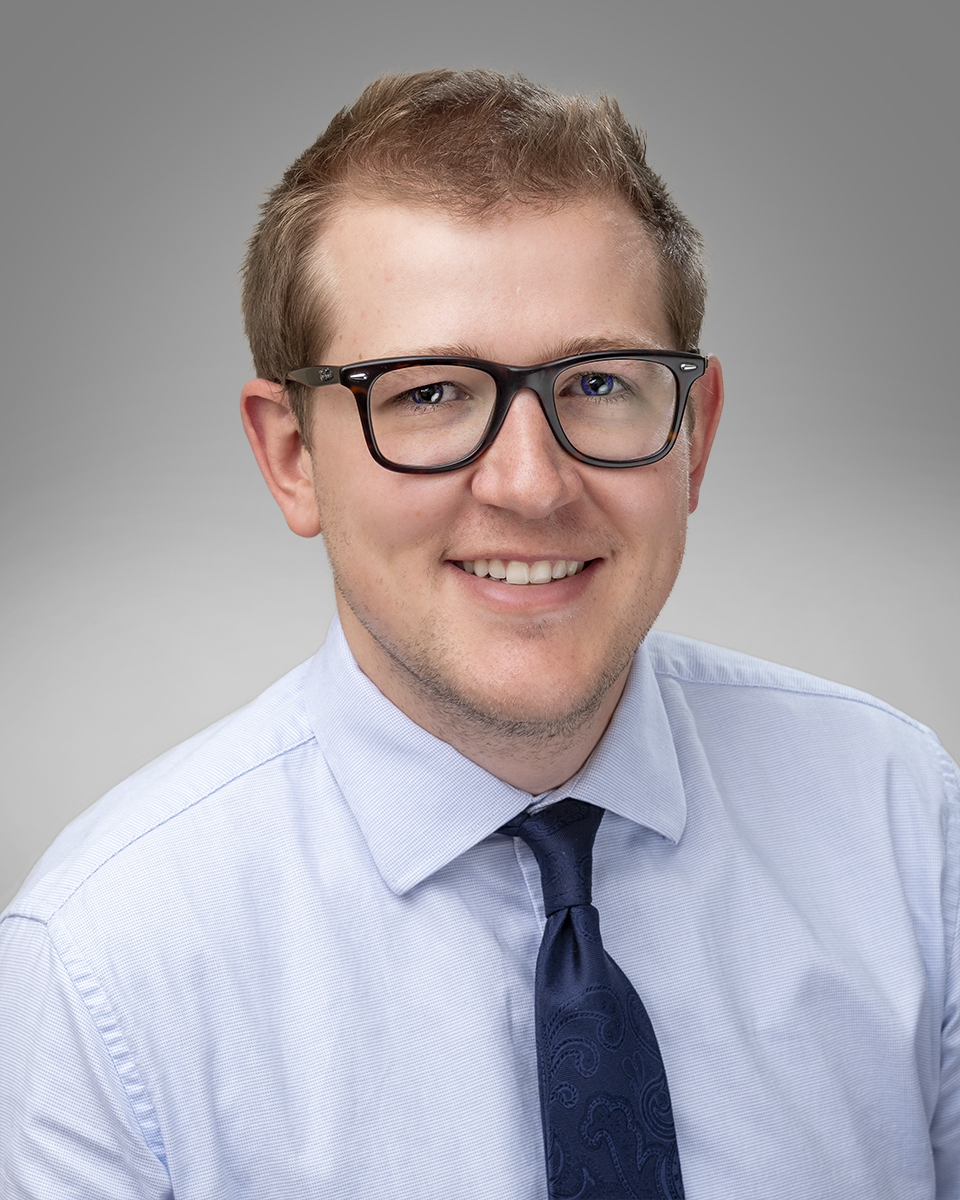
Brad was fascinated by pharmacology and took every elective related to pharmacology, while working as a pharmacy intern to get more hands-on experience with pharmacy.
“My favorite elective was centered around the pharmacology of illicit drugs/drugs of abuse,” he says. “The degree prepared me well for graduate school, as the majority of my PharmTox classes were taken with graduate students, including pharmacy students.”
Brad worked as a pharmacy intern at Froedtert Hospital and got to know the UW–Madison pharmacy students in classes with him.
“The program allowed me to shadow pharmacists in a number of clinical settings, along with some physician shadowing, too,” he says. “Ultimately, I found my favorite setting was with a pharmacist running a coumadin clinic, having daily interactions with patients and modifying their medication regimens.”
Brad realized he wanted a career with daily patient interaction and development of treatment plans, so he took his PharmTox training to medical school at the Medical College of Wisconsin, working as a pharmacy technician at Froedtert for the first several years. He chose to focus on internal medicine so he could use his pharmacology knowledge. He currently works as a hospitalist with Critical Care and Pulmonary Associates, P.C., taking care of patients at several hospitals in the Denver area.
“My physician group partners with one of the local medical schools for resident/medical student rotations, and the part of my job I am most excited about is educating future physicians,” he says. “I continue to use my pharmacology background in my daily work, but I also use it alongside my pharmacy colleagues on multiple hospital committees, including the pharmacy and therapeutics committee and the antimicrobial stewardship committee.”
PharmTox to Pfizer
Dana knew she wanted to be a scientist as early as first grade.
“My brother and I gravitated towards the health sciences,” she says. “I was always interested in medications. I was fascinated by understanding how and why they worked to treat disease.”
At UW–Madison, where she ran cross-country for several years, Ramms joined a research lab as part of her introductory biology course. When she committed to the PharmTox program, knowing research was part of the major was a bonus.
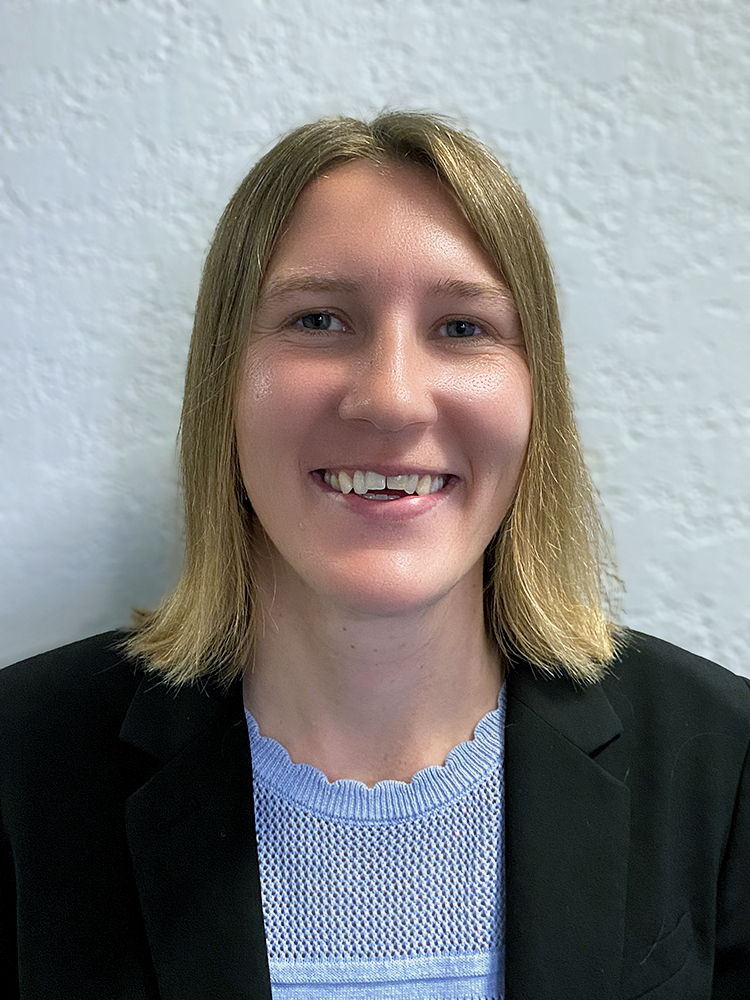
“I liked the structure of the program and the graduate classes, where we didn’t just memorize the concepts, we applied them in the context of drug action,” Ramms says. “PharmTox was small enough that I got to know everyone, and we could interact with professors, pharmacists, and physicians.”
Ramms included a research block in her course schedule every year.
“It was my favorite thing,” she says. “A PhD was the natural next step to become an independent scientist.”
She earned her PhD at the University of California, San Diego (UCSD), where she was able to do an internship at a pharmaceutical company, and she joined Pfizer after graduating.
“The level of science here is amazing,” she says. “We’re tackling tough questions — we work on things that are completely novel. The team environment creates a great atmosphere to think, try things, and explore. Pfizer’s ability to translate research into helping people is the most gratifying part of my job, and I get to see it directly.”
Currently, she’s a principal scientist in oncology research and development at Pfizer, splitting her time between project management, analysis, and bench research.
“I work early in the research and development process, and our goal is to identify a candidate molecule that could go into the clinic, so it feels like a big responsibility. It motivates me to do the best job I can and to make sure we know everything about that molecule. It’s fun to be that close to helping someone with science.”
“We are extremely proud of both of our kids and their accomplishments,” says Cindy. “We encouraged them to investigate the offerings at the School of Pharmacy because of the rigors and the great academic foundation the School would provide no matter what direction they went. Their curiosity and hard work paid off.”
